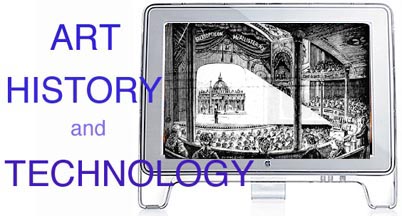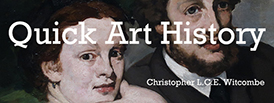

A BRIEF HISTORY
1 - Introduction This essay is a brief review of the relationship between art history and technology. Far from being something new to the discipline, technology in various forms has long been embraced by art historians. Indeed, it can be shown that technology has shaped and guided the discipline, especially over the last hundred and fifty years. Much of what art historians do today in the study and teaching of art history is done at the mercy of technology. The term technology is used in this essay in its broad contemporary sense as referring to any mechanical or electronic device that is made for and used as a means of artificially reproducing and disseminating images and information. None of the technologies referred in this essay was made specifically for the use of art historians; they have, rather, been cleverly adapted as a means to provide art historians with images that are needed to study and teach art. Ideally, art historians study original works of art, but because of the way the discipline has evolved this is rarely a practical option in the classroom. Introductory art history courses these days involve studying artworks from around the world. The solution to this dilemma is reproductions in the form of slides and photographs, which can be conveniently gathered together. This willingness to accept reproductions in place of the original occurred centuries ago. It is the 'Great Compromise' of art history, made necessary in order for the discipline to continue to function. Technology has provided art historians, and others, with the means to make multiple reproductions of ideas and artworks. Art history today cannot be studied or taught without recourse to reproductions produced by one technology or another.
|


 1 Introduction
1 Introduction